Share
Working at ESO
Are you interested in working in areas of frontline technology and in a stimulating international environment? Do you feel your profile matches our requirements? Learn more about our current vacancies and apply online. Read more..
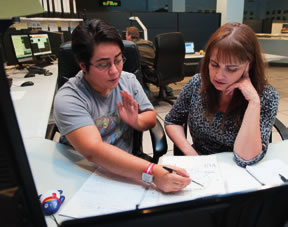
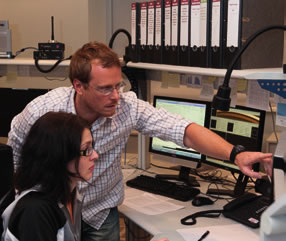
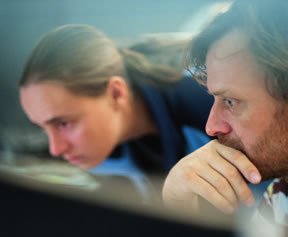
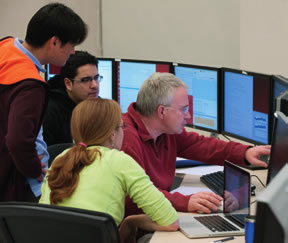
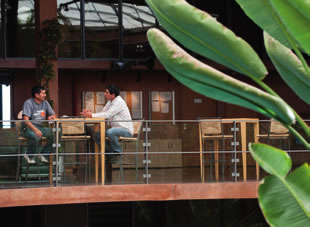
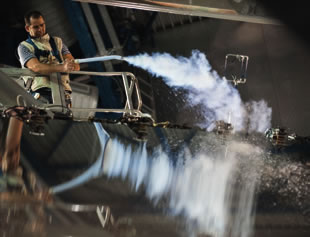
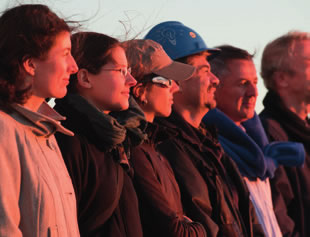
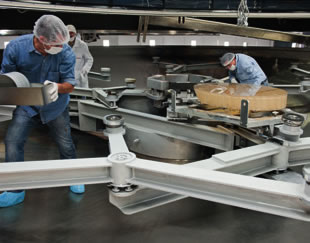
The European Organisation for Astronomical Research in the Southern Hemisphere (ESO) is the foremost intergovernmental astronomy organisation in Europe and the world's most productive ground-based astronomical observatory. ESO carries out an ambitious programme focused on the design, construction and operation of powerful ground-based observing facilities enabling astronomers to make important scientific discoveries.
ESO operates three unique world-class observing sites in the Atacama Desert region of Chile: La Silla, Paranal and Chajnator. The ESO headquarters are located in Garching, near Munich, Germany.
At Paranal, ESO operates the Very Large Telescope, the world's most advanced visible-light astronomical observatory. ESO is a major partner in ALMA, the largest astronomical project in existence. And on Cerro Armazones, ESO is building the 39-metre European Extremely Large Telescope, which will become "the world's biggest eye on the sky" and whose operations will be fully integrated into the Paranal Observatory.
For its Maintenance, Support and Engineering Department at the Paranal Observatory, ESO is inviting students from European and Chilean universities and engineering schools to participate in our program:
Winter Students 2017
Paranal
Deadline 22/03/2017
The MSE Department of the Paranal Observatory provides technical support to the four VLT 8-m telescopes, to the VLT Interferometer with its auxiliary telescopes and to all instruments available for scientific observations. The telescopes and instruments are complex systems that involve many advanced technologies and require a high level of engineering support. The MSE Department of Paranal has a total workforce of 67 engineers and technicians distributed in 5 engineering groups. The three projects for the period 2017 are:
I.- Engineering Big Data Analysis
During the internship, the student will be in charge of: Creating a set of dashboards as requested by the key users. The key users will represent all the engineering and maintenance teams (Mech., Elec., SW, SQA, Instr., SAO) as well as science operation. The Dashboard will be created using the tools: Grafana, Kibana and also Jupyter. The data is going to be already available in the data lake in formats that can be easily accessed from those tools. Writing documentation and train the key users. It must be pointed out, that at the end of this project phase, users themselves will be responsible of creating and maintaining the dashboards. Assisting the key users in taking advantage of the power of Jupyter Notebooks and the Python libraries, ensuring that good practices and solutions created by one advanced user, are known and re-used by the others. This include write Python libraries of commonly used code. Documenting problems that need to be addressed for the next project phase. These problems could be related to performance, lack of functionality, instability or new data sources Getting familiar with other analytical tools included in the project such as: Orange, SpagoBi or Omero, Keeping the system up and running (with the help of the software team and IT)
It is important to remark, that by powerful Jupyter/Python tools we refer to statistical tools, machine learning (e.g.: Keras or H2O), computer vision (openCV), graph computing (Janusgraph), and also distributed processing frameworks such as Dask and Spark.
Student profile: Student of last year of Software, Information Technology, Electronics, Data Analysis or related field. Proficiency in Data analysis and visualization Knowledge or strong interest in Big Data, computer vision, machine learning and probabilities would be an asset Good command in English (written and spoken)
Duration and shift: 4 to 6 months, 8x6 shifts at Paranal aligned with supervisor.
II.- Motor control and industrial computer monitoring
This project consists in 2 phases: Characterization and performance analysis of motors controlled by CAN-RMC: the instruments SPHERE, GALACSI, GRAAL and VIMOS are using motor control devices based on can-rmc, eg. SPHERE has 16 controllers for 61 devices, and the motors have to be monitored and eventually they have to be re-tuned. The project consists in the implementation of the can-rmc test bench, which will help to perform the analysis of DC and stepper motors. The devices to be tested are linear translator and rotatory wheels (filter wheel). The test bench will be setup with the can-rmc and the devices using a new control/analysis software called "CanOpus" to perform the characterization and tuning of the motors. Industrial computer monitoring: evaluate a solution based in low cost massively available Linux-ARM boxes (such as the Raspberry Pi and similar devices). The solution must be useful for: 1) the electronic and software groups to replace the old netbooks used as console inside the telescopes, 2) The electronic lab, in order to simplify the Local Control Unit (computer used in the field for telescope systems) diagnosis and rom programming, 3) Preventive maintenance, by continuously monitoring fans, VME crate temperatures, power supplies and other easy to measure parameters that will allow MSE engineers to perform better predictive maintenance.
Student Profile: Students of last year in Electronics or Software Engineering. Some ability in computing and motor control Good command in English (written and spoken)
Duration and shift: 4 to 6 months, 8x6 shifts at Paranal aligned with supervisor.
III.- Technical Time Request tool
This project aims at creating a SW tool/application to manage the Telescope Technical Requests (TTR) process. It will replace our current system that is completely manual, from filling a word document to generating the request, uploading it to wiki pages and PDM, finding approvals, etc. The new application and process will be more efficient, faster and allow us to use easily all information in the TTRs because it will be centralized in a database. During the semester TTR call, a lot of manual work is required to analyze the information submitted, so the tool proposed would simplify these tasks.
Student profile: SW/programming engineering school/university, student in last-year of degree. Good command in English (written and spoken)
Duration and shift: 4 to 6 months, mix of 8x6 shifts at Paranal aligned with supervisor and 5x2 shifts in Vitacura.
We Offer:
ESO offers a special allowance during the period you are performing your apprenticeship with us; transportation arrangements (plane tickets) from and to Santiago are provided by ESO, with accommodation provided on site. We also cover the cost of an International return trip from/to for students from European universities. The Duty Station is Paranal Observatory, in the II Region, 150km South of Antofagasta. Working schedule will be 8 days on duty and 6 days off duty (8x6).
Application:
We invite all students from European and Chilean Universities in their career's last period to apply. The apprenticeship should be supported by the University (Letter should be provided). If you are interested in working in areas of frontline technology and in a stimulating international environment, you are invited to apply online https://recruitment.eso.org/. Applications must be completed in English and should include a motivational letter indicating the project you are interested to apply to, and CV.
Closing date for applications is 22 March 2016.
The post is equally open to suitably qualified male and female applicants.
